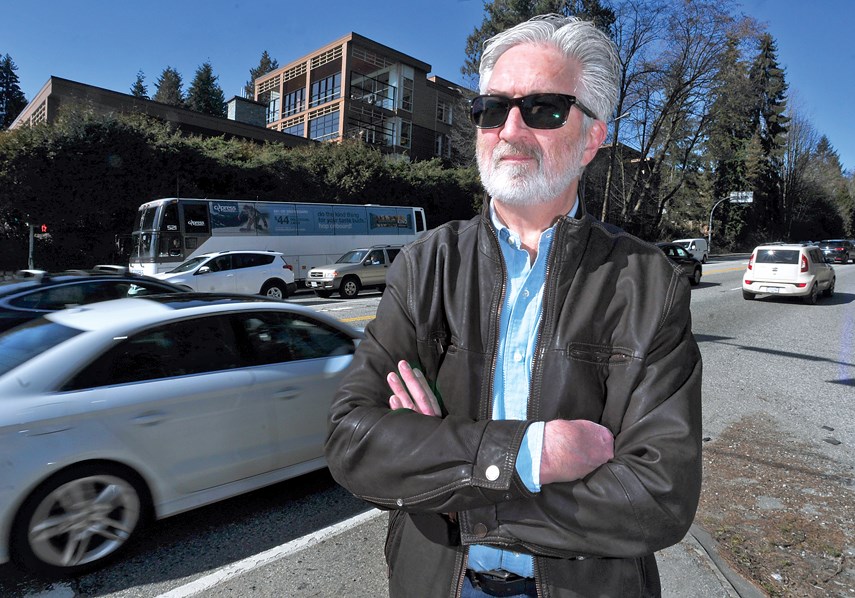Residents in Metro Vancouver have until Wednesday to give their opinions about whether tolling traffic “pinch points” – likely bridges – or charging motorists by distance driven makes more sense to halt traffic gridlock, or whether any kind of toll at all should be considered.
The question is one of several being asked by the independent mobility pricing commission, set up to study whether some kind of driving toll would help cut down on traffic congestion in the region.
The commission is to present its report to the TransLink mayors’ council by the end of April.
Options being considered now include some kind of “distance pricing”, which would charge drivers an amount per kilometre driven within the Lower Mainland, or a system which would charge drivers when they went past a certain point in the road network – like a bridge entrance – or entered a particular zone like downtown Vancouver during peak rush hours.
District of North Vancouver Mayor Richard Walton says tolling pinch points makes the most sense, because that is usually when and where the traffic bottlenecks happen.
The idea behind the toll is that if only a small percentage of drivers changed their travel habits, it could have a significant impact on gridlock.
“If you move 15 per cent of the traffic off the peak (rush hour) period in the morning, it would have massive impacts for the remaining 85 per cent (of drivers),” Walton said.
But a toll would have to guarantee real impact on traffic snarls to win over the public, he added. People also want to see improvements in transit and an end to or reduction in the gas tax, he said. Otherwise, the toll will be seen as just another tax grab.
But not everyone is happy about the idea of a new toll, regardless of how it’s structured
David Reinboth, a human resources consultant in West Vancouver, worries that by making it more expensive for workers to get to the North Shore from other parts of Metro Vancouver, it will end up hurting both local businesses and public sector employers.
“My concern is if your firefighters, your police officers and everyone who is working in retail is coming to the North Shore from Burnaby, Richmond and Langley, if we make it more difficult to get to work…do we make it easier for people to go ‘It’s not worth it’,” he said.
Reinboth said businesses, which are already struggling to attract and retain workers on the North Shore, have largely been missing from the discussion.
He added asking people to pay now for transit improvements at some point in the future is “a very difficult sell”, particularly when many transit options on the North Shore are inconvenient or time-consuming, compared to driving.
Heather Fowler of Lynn Valley says she’s also not keen on the idea of tolls.
Fowler fears any toll would just be a cash grab on already-hard-hit Lower Mainland motorists. “We already pay the highest gas prices in Canada,” she said.
Fowler’s work involves her helping out seniors, by taking them to medical appoints, grocery shopping and social activities. That involves driving throughout the Lower Mainland, she said. “A lot of them have mobility issues. They can’t take transit,” she said. “If you’re (charging me a tariff), you’re (charging my client).”
Fowler said she’s also not happy about the idea of having her movements throughout the region being tracked. “It’s kind of Orwellian,” she said.
So far, no dollar amounts have been provided for potential tolling scenarios on the mobility pricing commission’s website.
According to reports which looked at congestion tolls in other parts of the world, tolls in Stockholm range from $1.70 to $5, with a maximum charge of $16 a day. In London it costs $19 to drive into the city centre on a weekday. The tolls have resulted in cutting car traffic by between 16 and 20 per cent and cutting congestion by about 30 per cent, according to a report released earlier by the commission.
Metro Vancouver residents have until the end of Wednesday, March 14 to weigh in online at itstime.ca.
So far about 6,000 people have weighed in. About one-third of the people who have responded online live in the City of Vancouver. Residents of the North Shore so far make up only about five per cent of responses.
So far both tolling options appear to have garnered a lukewarm response, with fewer than 50 per cent of people in favour of either.



